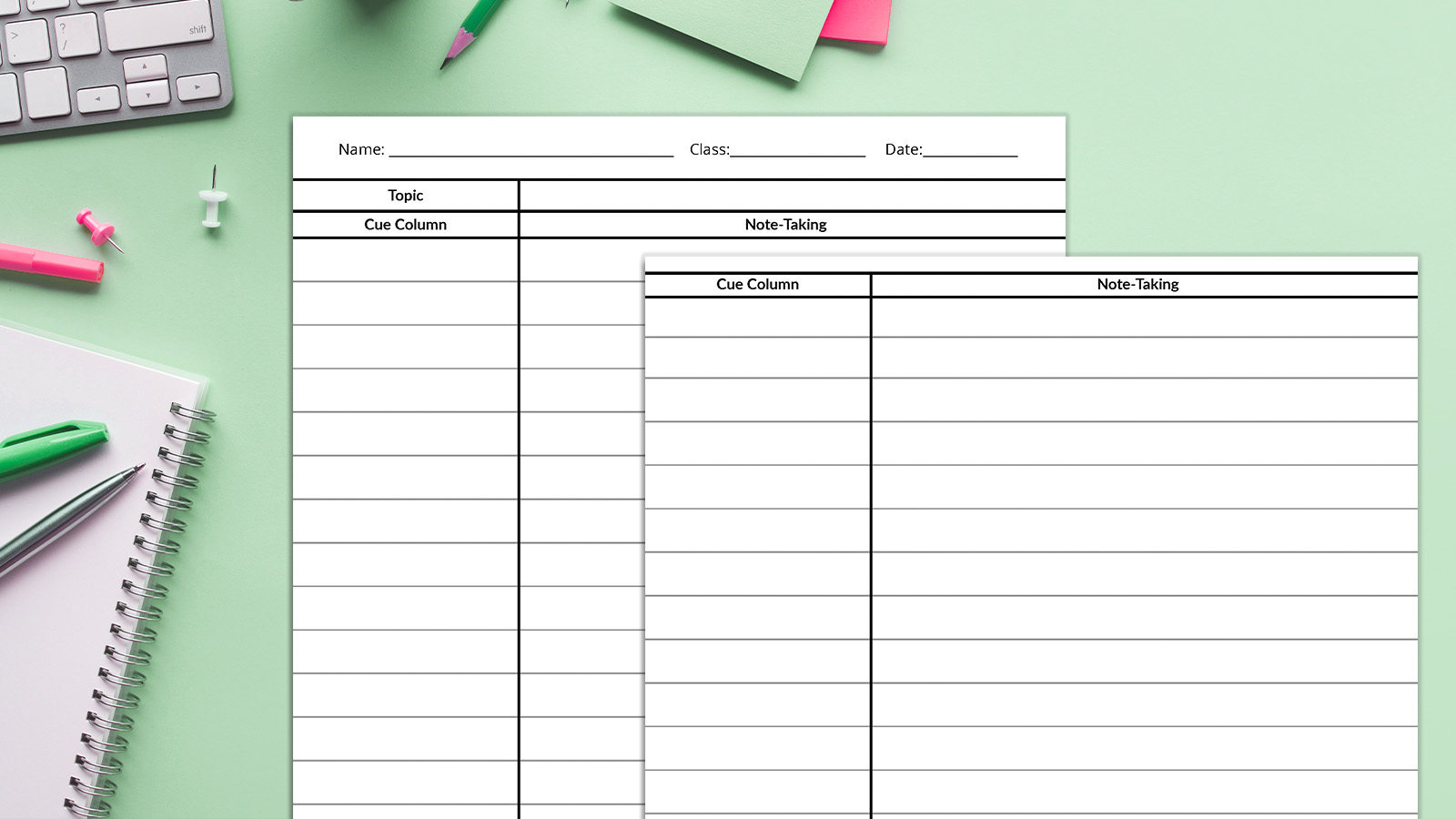
Note-taking is one of those lifelong skills that will help students in your class today as well as in college and beyond. Taking good notes means that students get the important information needed from a class or text, then use those notes to study or while working on assignments. It’s a life skill, and this free Cornell Notes template will help you teach it.
Grab our free Cornell Notes template to use with students as you teach them how to take notes. It has two variations, one for students who are learning how to use Cornell Notes and one for students who are familiar with the strategy and are ready to apply it. Both templates can be used for typed notes using a fillable PDF or printed for handwritten notes.
What are Cornell Notes?
The Cornell Notes system is a way to organize note-taking space to capture important information during a lecture, discussion, or reading. The system was developed by Cornell University professor Walter Pauk in the 1950s. Pauk wanted students to be active during note-taking, which is what his system of columns and organization provides.
To create Cornell Notes, students divide their page into three areas: a note-taking area, a cue column, and a space for summaries. Each space serves a different function for students as they listen or read and jot notes, think about what they’re learning, and then review what they learned.
Why use Cornell Notes?
Cornell Notes are a structured way to help students take notes and use those notes during a course. And they’re a way to keep students returning to their notes long after the lecture or reading is over.
What do Cornell Notes include?
Cornell Notes include spaces for:
- Note-taking: This is the largest column, where students record notes in a meaningful way.
- Cues: The cue column is the smaller column. As students listen or read, this column stays empty. After they finish, they jot notes and questions in the cue column to help them review their notes.
- Summary: The summary section at the bottom of the page is for students to write down what they learn in a sentence or two. One way to help students really condense what they learn is to give them a word count. Their summary statement should be no more than 15 or 20 words, for example.
How do I teach Cornell Notes?
Teach Cornell Notes by modeling how to do them and within a larger note-taking strategy, like the 5 Rs.
- Record: Students record as many meaningful facts and ideas as they can while they listen or read.
- Reduce: After they read, or at a stopping point in the lecture, review the notes portion. Students can pull out important vocabulary words, write questions they have, identify important details, etc.
- Recite: Students cover the note-taking area and say what they learned from the lecture or reading in their own words. Then, they uncover the area and see what they got right. This is a great time to write the summary statement.
- Reflect: Students think about their connections to what they learned and form opinions about the content.
- Review: Students review their notes regularly, at least once a week, during a course to help retain what they are learning.
Keep in mind that students will still need to learn and practice the basics of taking notes, like how to listen for important information and how to read over notes once they’re completed.
Get the Cornell Notes printable

Our Cornell Notes printable has two variations, one for students who are learning how to use Cornell Notes and one for students who are familiar with the strategy and are ready to apply it. Just enter your email address in the form on this page to get the printable.